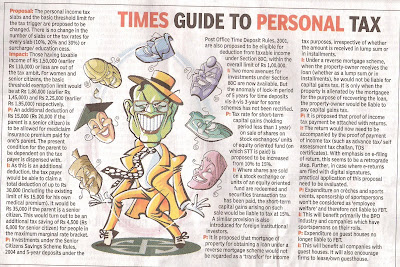
Tue, Nov 18 01:14 AM
By Jonathan Stempel and Dan Wilchins
NEW YORK (Reuters) - Citigroup Inc revealed plans to cut 52,000 jobs by early next year in a dramatic move to restore the No. 2 U.S. bank to health as it combats mounting debt losses and sagging economies worldwide.
The cuts announced by Chief Executive Vikram Pandit on Monday affect 15 percent of Citigroup's workforce, and are in addition to 23,000 jobs eliminated between January and September.
Citigroup plans to slash expenses by as much as 20 percent, and spend a total of $50 billion to $52 billion in 2009. That compares with $61.9 billion over the last four quarters.
The cuts will be global, affecting many regions and business lines, including the retail and investment banks, a person close to the matter said. About one-half will come from layoffs and attrition, and the rest from the sale of units, such as the German retail banking business.
Pandit became Citigroup's chief executive last December, and has faced much criticism from investors and others for failing to implement a workable turnaround plan. The New York-based bank has lost $20.3 billion in the last year, and some analysts do not expect it to make money before 2010.
"As the economy continues to weaken they will have greater credit losses," said Michael Holland, founder of money manager Holland & Co in New York. "Cuts will lessen the losses, but they in no way guarantee profitability."
Pandit told employees in a memo that Citigroup has spent the last year "getting fit," and projects a "difficult" 2009 for clients and customers.
Citigroup's latest cuts are the most by any U.S. company since the global credit crisis began last year. They are also the second most ever, trailing the 60,000 that International Business Machines Corp
The latest cuts would leave Citigroup with about 300,000 employees, down 20 percent from the end of 2007 and about the same number it had at the end of 2005. People at the bank said the cuts should be made by the first couple of months of 2009.
STOCK UNDER PRESSURE
Shares of Citigroup, a component of the Dow Jones industrial average, fell 19 cents, or 2 percent, to $9.33 in afternoon trading on the New York Stock Exchange.
Last week, Citigroup stock fell into the single digits for the first time since Sanford "Sandy" Weill created the bank in 1998 from the merger of Travelers Group Inc and Citicorp.
Well over 100,000 jobs have been lost at the world's largest banks and brokerages since the global credit crisis began. In the last month, Goldman Sachs Group Inc began cutting 3,200 jobs, and Morgan Stanley said it will cut 10 percent of jobs in the unit housing its investment bank.
Citigroup said it has a "very strong" capital position, and according to the person close to the matter has no need to further cut its dividend, which has already been reduced twice this year.
Still, many investors remain wary. Through Friday, the bank's stock was down 68 percent this year, leaving Citigroup with a market value of $51.9 billion.
That's barely twice the $25 billion of capital it received from the U.S. Treasury Department's bank bailout plan, and down from more than $270 billion in late 2006.
"We have a bull market in fear," said Henry Asher, president of Northstar Group Inc in New York.
Citigroup also said its board will make decisions on executive compensation after Dec. 31.
That prompted criticism from New York Attorney General Andrew Cuomo, who urged the bank to follow Goldman's decision on Sunday not to pay bonuses to top executives this year.
"It seems only fair that top executives should shoulder their fair share of these difficult economic times," Cuomo said. "It would send exactly the wrong message for Citigroup's top brass to collect bonuses while investors, taxpayers and now Citigroup's own employees suffer."
DIVERSIFICATION DOESN'T HELP
Citigroup was built principally by Weill, who ceded control to Pandit's predecessor, Charles Prince, in 2003. Analysts have said Citigroup never invested enough in technology or to make the bank's various parts work well together.
Its geographic diversity, including operations in more than 100 countries, is now also working against it as customers in such countries as Brazil, India and Mexico find it harder to stay current on payments.
At the same time, Citigroup's ability to grow at home is relatively limited. Last month, Wells Fargo & Co derailed Citigroup's attempt to buy Wachovia Corp and its $418.8 billion in deposits.
The bank has tried to downplay reports of dissension among directors regarding the performance of Pandit and the bank's chairman, Sir Win Bischoff. Last week, lead director Richard Parsons said the board supported management's plans.
more















